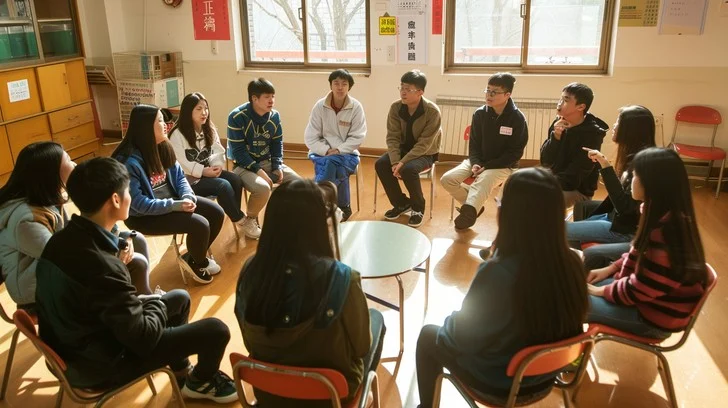A back casting room is a dedicated space in studios or production facilities where artists perform lines or actions again to replace or enhance original recordings. This room is designed for high-quality audio recording and syncing. Often used in film, television, and animation, the back casting room ensures sound clarity, emotional tone, and synchronization with visuals. It typically includes soundproofing, a quality microphone setup, and video playback equipment. This setup helps actors and voice artists match their dialogue precisely with the screen performance. The back casting room has become vital in post-production.
Table of Contents
Why Is the Back Casting Room Important?
The back casting room plays a major role in fixing audio issues like unclear dialogue, background noise, or emotional inconsistencies. In many scenes, on-set microphones cannot capture clean sound due to location noise. So, studios use back casting rooms to let actors record again with precision. This room ensures clean audio that matches visuals perfectly. Directors also use this space to enhance emotion or change the tone of the scene. With better control over voice and sound quality, the back casting room improves the final output of movies, shows, and games.
Equipment Used in a Back Casting Room
The back casting room includes advanced sound technology. It has microphones, mixers, headphones, monitors, and software for syncing audio with video. Actors often watch themselves on a screen while re-recording lines to match lip movements. High-quality condenser microphones record clear voices. Acoustic panels reduce noise and echoes. Digital audio workstations (DAWs) like Pro Tools or Adobe Audition are used for recording and editing. The goal is to make the new voice sound natural and consistent with the original footage. These tools work together to create studio-grade audio.
How Back Casting Differs from Voice Acting
Back casting and voice acting are related but different. Voice acting creates voices for animations, games, or radio, often without visuals. In contrast, back casting involves recording voices to match live-action or animated footage already shot. The actor in a back casting room must match lip sync, timing, tone, and mood. This task requires skill and focus. Voice actors may create voices from scratch, while back casting actors often improve or fix existing recordings. Both fields are part of voice work, but back casting is more technical and precise.
When Is a Back Casting Room Used?
Back casting rooms are used during post-production. This can happen after filming wraps or during the editing phase. They are used when audio from the original shoot is too noisy, incomplete, or lacks emotional depth. Sometimes entire scenes need re-recording, especially if filmed in crowded or loud areas. They are also used in dubbing foreign-language films or adding special effects sounds. Game developers use them for dialogue and sound effects. Studios rely on these rooms to produce professional-level sound quality that meets global standards.
The Growth of Back Casting in Gaming
In modern game design, storylines are rich and character-driven. Developers use back casting rooms to polish character dialogue, improve realism, and sync voices with animation. Voice actors work in these rooms with motion capture footage. Their performance must align with facial and body animations. In multiplayer or open-world games, characters often speak dozens of lines. Re-recording is common to fix errors, enhance emotion, or add updates. As games become more cinematic, the back casting room becomes a core tool in delivering a seamless player experience.
Challenges in the Back Casting Process
Back casting involves technical and performance challenges. Matching tone and emotion from the original scene is hard. Actors may have to recall how they felt during the shoot. Lip syncing also demands precision. Audio engineers must ensure recordings don’t sound out of place. The room must stay silent with no outside noise. Directors and editors may ask for multiple takes to get one line just right. Even a slight mismatch in timing or mood can ruin a scene’s impact. It takes teamwork, patience, and advanced tools to get perfect results.
The Role of the Director in Back Casting
In the back casting room, the director leads the session. They help actors understand the scene’s emotion, tone, and timing. The director gives feedback during each take, aiming for audio that fits the story and performance. They may adjust lines or pacing if needed. Working closely with sound engineers, the director ensures all parts align with the video. They also check for technical accuracy, making sure voices don’t clash with the soundtrack or sound effects. The director’s vision and communication are key in making the process smooth and successful.
How the Back Casting Room Impacts Final Production Quality
A strong back casting session can take a good scene and make it great. Clear sound enhances storytelling and holds the viewer’s attention. Dialogue that flows naturally makes characters feel real. Inconsistent audio or poor voice syncing can distract and lower production value. A clean, balanced audio track gives a polished and professional finish. Producers know that audio matters as much as visuals. The back casting room is where final adjustments turn raw footage into finished art. This space helps productions meet viewer expectations in today’s high-quality content world.
Conclusion
The back casting room is a vital part of film, TV, and game production. It allows teams to fix, refine, or improve voice recordings after filming. From fixing noise issues to enhancing emotion, this space ensures the audio matches the story’s intent. As media demands rise, so does the need for flawless sound. The back casting room offers creative freedom and technical control. It lets artists perfect their performances and deliver content that sounds just as good as it looks. In modern storytelling, it is a behind-the-scenes powerhouse that helps turn vision into reality.
FAQs
What is the purpose of a back casting room?
It is used to re-record or enhance dialogue and sound effects in post-production, ensuring high-quality, synced audio.
Is back casting only used in films?
No, it is also used in TV shows, video games, animated projects, and dubbing for foreign content.
What equipment is found in a back casting room?
It includes microphones, soundproof panels, mixing consoles, monitors, headphones, and recording software.
Can actors change their lines during back casting?
Yes, with director approval, lines can be adjusted to improve emotion or clarity.
How long does a back casting session take?
It varies by project but can last a few hours to several days, depending on the amount and complexity of dialogue.
Read Latest Post
Miocado: A Healthy Avocado Spread for Every Kitchen
Pinoy Tambayan Pinoy: A Hub for Filipino Entertainment






